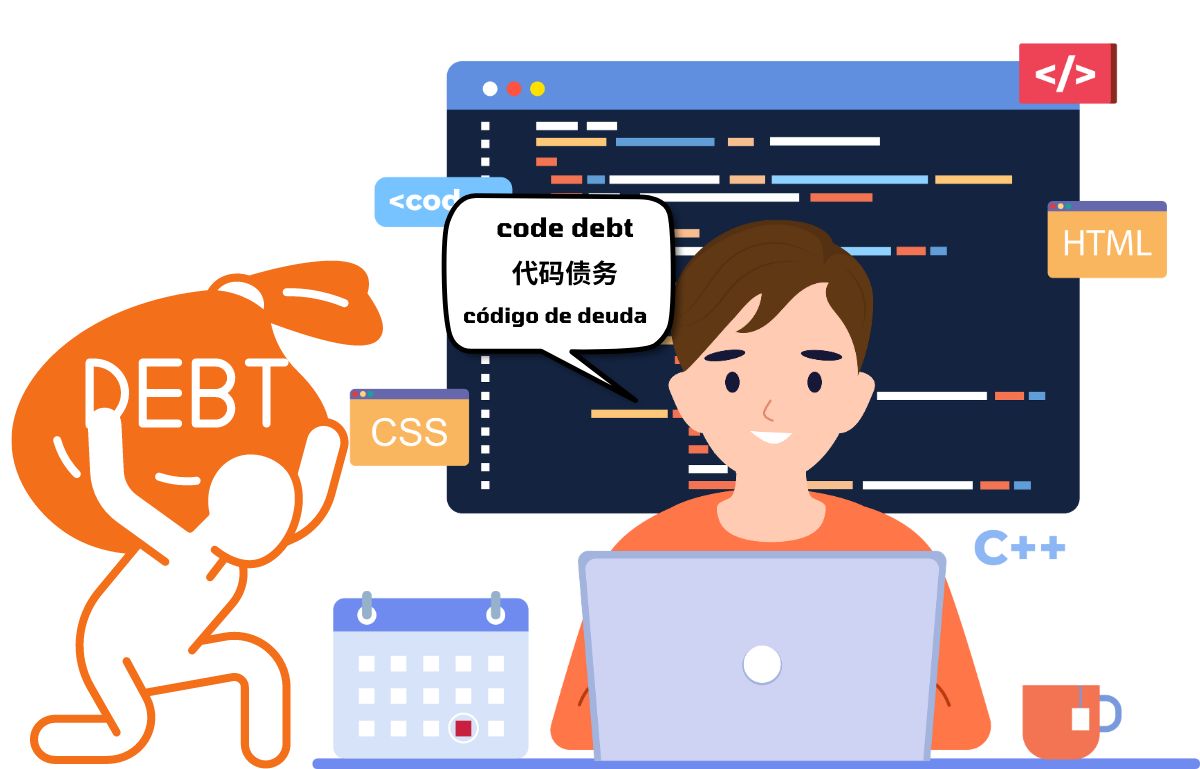Code debt is a technical term very common in the developer circle. It is a synonym of technical debt which means when developers take shortcuts to complete software by getting a quick fix on the codes. It’s like taking a debt in the short run, which becomes harder to return in the long run. Some developers are of the belief that there are two types of code or technical debt, the good and the bad one. Talking about the global aspect, when software is made global with the help of software translation services, this technical debt becomes visible.
There are multiple security concerns that developers overlook when they take the short road with technical debt. In this read, we are going to unveil those hidden security costs that can jeopardize the integrity and status of your software in the eyes of your audience.
What is Code Debt? Is It Always Bad?
As mentioned earlier, code debt is like taking a financial debt in a hurry and later paying the consequences. When it comes to software, developers often make haste in developing code to form the software early. It gets the work done in no time but the expense is really heavy. The question that arises is does it always have to be bad? No, it can be a strategic decision in software development that can lead to a competitive advantage. For instance, it helps developers launch their software in the market before the deadline and later they can fix the loopholes. In this way, their software makes it space in the market as well as contains all the features.
But what happens when these loopholes aren’t fixed on time? What disadvantages do they pose? These disadvantages may sound tiny like users can’t use the software but these disadvantages are bigger than the functionality of the software.
Find Out the Hidden Security Costs Behind Code Debt
There are literally security threats to not only the developers but also the users who actively make use of those software. For a second, consider you designed the software or an app. Because of global expansion, you use app localization services and localize your app so that world audiences can have access to your app. But at the backend, the code for the app consists of broken fragments of code which is now hindering the functionality of the app. Not only does it make people delete and stop using your app, but it also makes their data vulnerable. Let’s talk about this in detail.
An Easy Gateway for Attackers and Hackers
When the software of your app consists of technical or code debt, it becomes easy for hackers to steal valuable information. For instance, if your software consists of codes from external libraries that work on functionalities like user authentication and data encryption. When these blocks remain open or incomplete, they create a backdoor for third parties to enter and cause destruction. Poorly designed codebases are an easy entry for hackers so developers surely need to work on that part.
The Domino Effect of Unsolved Code
This destruction gives rise to a series of reactions that create vulnerabilities all over the features of the app. This gives birth to the domino effect. In simple words, the setting off of one event gives rise to a series of similar events. For instance, if B is affected by A then C is affected by B and so on the imbalance goes on. A minor bug in the code can affect the whole code database which is simply the domino effect of code debt.
Results in Data Breaches
When the software or app becomes vulnerable to attackers and hackers, it is just a matter of time before these hackers steal valuable information. They can know about the whole sequence of code and alter it in such a way that developers lose access to the app or software. Or even these hackers can steal information of users which can raise extreme security threats.
Loss of Consumer Trust
Data breach results in the deletion of the app and software and users feel betrayed. These feelings of betrayal end in the loss of consumer trust and users completely abandon the app. Imagine what happens if your app user loses trust in your app. He/She would never again use the app and in the global market, this news will spread like fire. This can bring a sudden shutdown of your app and you end up being a bunch of developers who can’t even create a safe app.
Final Words!
To sum up, creating software and apps takes great effort and intelligence. When developers use shortcuts, they end up getting caught in code debt. In the long run, these code debts sabotage the security of the app and make your users become prey to hackers. The loss of valuable information causes a loss of user trust, which negatively affects your app and software.



